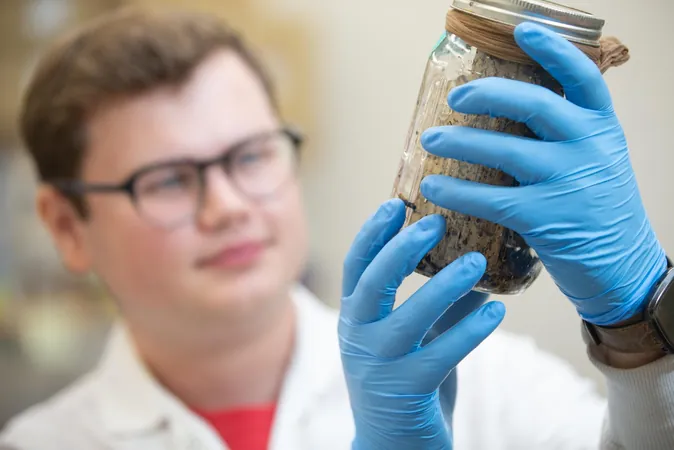
Breaking Down the Barriers: Scientists Take Aim at Chagas Disease's Hidden Killer
2025-06-08
Author: Sarah
Chagas disease, dubbed the 'silent killer,' often creeps up on its victims, lurking undetected until it's too late. This potentially fatal illness is caused by a parasite that can remain hidden in the body for years before revealing its deadly side.
At the forefront of the fight against this insidious disease is a dedicated team at the University of Cincinnati, who are determined to disrupt the lifecycle of its underlying parasite in hopes of finding a cure. Their groundbreaking study shines a spotlight on a battle that affects millions.
The Kissing Bug Connection
Chagas disease is transmitted by kissing bugs—aptly named for their tendency to bite human victims around the face as they sleep. These crafty critters don’t just feast on blood; they also deposit the parasites in their droppings, which can enter the bloodstream through the bite wounds, setting off a chain of infection.
With an estimated 6 to 8 million people across North and South America infected, including about 300,000 in the U.S. alone, the burden of this disease is staggering. Unfortunately, many don't realize they carry the parasite until it manifests years later, resulting in severe complications.
A Glimpse into the Parasite’s Lifespan
"The main challenge with Chagas disease is that most people remain oblivious to their infection until it’s too late for effective treatment," said Noelia Lander, an assistant professor at UC. In her lab, Lander and her students delve deep into the multifaceted lifecycle of this parasite, seeking exploitable weaknesses.
This minute single-celled organism shows remarkable resilience, traversing from the digestive tract of its insect host to the human bloodstream, adapting to extreme environmental shifts along the way. It has thrived on Earth for millions of years, long before humans arrived, prompting researchers to be both cautious and impressed by its survival tactics.
Unmasking the Parasite’s Secrets
Lander acknowledges the parasite as a formidable foe, yet she also admires its survival strategies. "The goal is to find its vulnerabilities to combat the illness effectively." With insights from team members like Joshua Carlson and Milad Ahmed, the researchers are armed with cutting-edge gene-editing technologies aimed at deciphering critical protein functions that enable the parasite’s adaptability.
Ahmed emphasizes the parasite's cunning ability to cloister itself within human cells, thereby evading the immune response and medications. Once the disease hits a chronic stage, treatment options dwindle considerably.
A Promising Path Forward
By disrupting the lifecycle of this resilient parasite, researchers are paving the way for innovative treatment strategies. As Lander suggests, interrupting this process might just hold the key to breakthroughs in fighting Chagas disease and saving lives.


 Brasil (PT)
Brasil (PT)
 Canada (EN)
Canada (EN)
 Chile (ES)
Chile (ES)
 Česko (CS)
Česko (CS)
 대한민국 (KO)
대한민국 (KO)
 España (ES)
España (ES)
 France (FR)
France (FR)
 Hong Kong (EN)
Hong Kong (EN)
 Italia (IT)
Italia (IT)
 日本 (JA)
日本 (JA)
 Magyarország (HU)
Magyarország (HU)
 Norge (NO)
Norge (NO)
 Polska (PL)
Polska (PL)
 Schweiz (DE)
Schweiz (DE)
 Singapore (EN)
Singapore (EN)
 Sverige (SV)
Sverige (SV)
 Suomi (FI)
Suomi (FI)
 Türkiye (TR)
Türkiye (TR)
 الإمارات العربية المتحدة (AR)
الإمارات العربية المتحدة (AR)